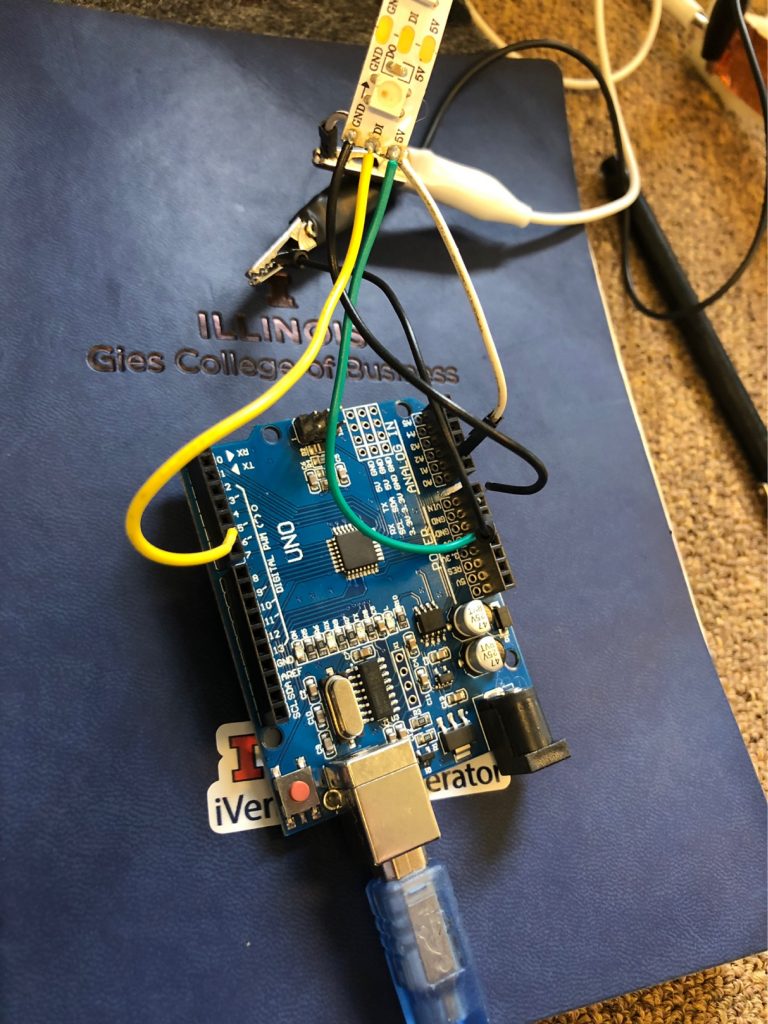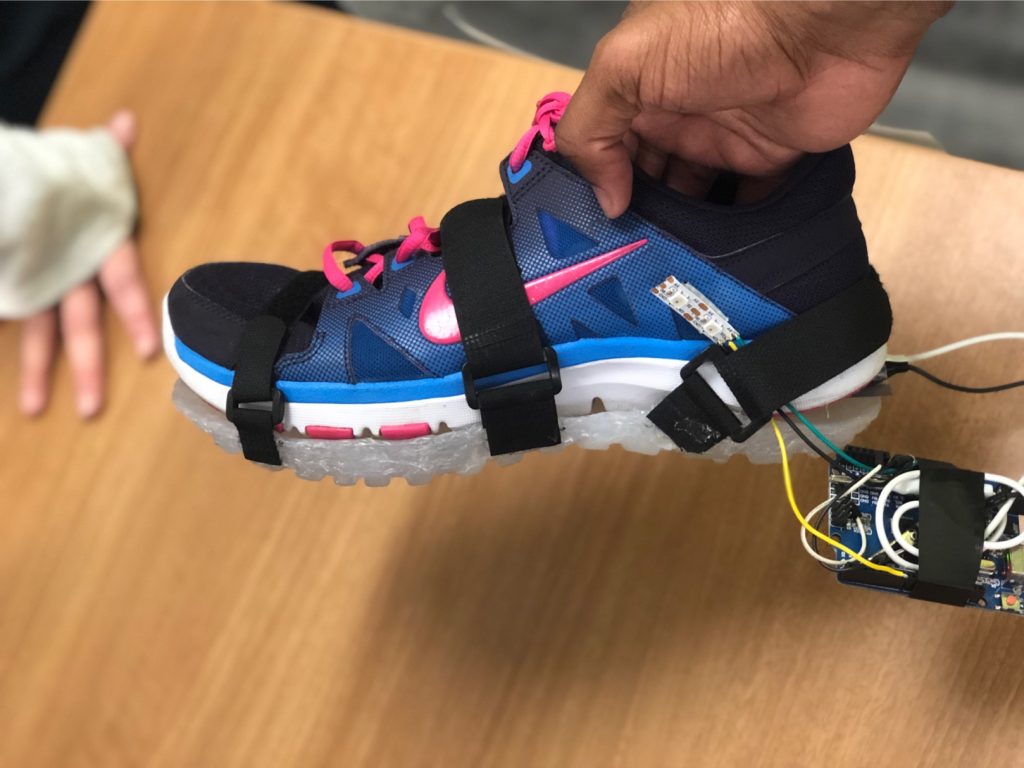Our team took a different path compared with other teams. At the beginning of the semester, we were focusing on inventing a glove for people with disabilities to eat so that they can eat with comfort and independently. However, we changed our idea after the pre-makerathon event. During the event, we met John, one of the mentors for the course, and we decided to change our idea after hearing his personal story. We learned that there hasn’t been a watch that is accessible for him in the market: most watches require the whole hand to put on and take off. Even with simpler design such as a watch with magnet wrap, those can easily interfered with the manual wheelchair he was using. As a result, he had to abandon using the watch. However, if possible, he really wants to be able to wear a watch. After hearing his story, our team wanted to focus on this opportunity to invent a watch wrap that is accessible for people with limited pinching mobility.
We think the need for such an accessible device is huge. This type of design would enable people with limited pinching mobility to be able to wear a watch with just one finger. Specifically, we found that this design would benefit people with Charcot-Marie-Tooth. In our research, we realized that Charcot-Marie-Tooth is the most common inherited disorder that involves the peripheral nerves. In the United States along, it is estimated that 150,000 people have such disorder. On a global scale, 1 in 3,300 people would have such disorder. One symptom for people who have Charcot-Marie-Tooth is that they may develop weakness in their hands. This makes daily tasks such as writing and fastening buttons difficult. Similarly, wearing a watch independently is hard for them as well.
We have investigated the current market and deemed that the current products in the market don’t solve the problem. The traditional watch requires people to be able to put the wrap into the loop to lock the watch. This is very difficult for people with limited pinching ability. For sports watch that seems to be easy to put on, although it is easy for people to put their hands in the watch, it is still hard for people to lock it so that it would not move around the hand. The magnet wrap doesn’t work for people who use wheelchair because it will interfere with the wheelchair. The watch with slap band seems to work because people can just slap to put it on, yet it is hard for people to take off the watch. Because there is no watch that work in the existing market, we want to invent a watch that incorporates all the advantages of all the previous design.



We started with sketches and low-fidelity prototype to investigate in the movement of wearing a watch. As the pictures below shows, we have used buttons and 3D-printed material to represent a watch in our prototype. We have also used different materials to test the wrap. After trying different designs, we thought the sports watch design was a relatively easy way to put the watch on the hand. We also found that the wrap need to be flexible enough so that people with different mobility and shapes of hands would be able to put their hands in the loop. After idea that we incorporated in our design was to use loops on the watch wrap. This idea was originated from John’s personal life experiences. His clothes has loops on them so that he could just use one finger to wear the clothes. We thought this was a very accessible solution and incorporated this idea in both putting on and taking off the watch. All those concepts are the basis of our design. Another feature that we added to our design was the hook. With previous features and Velcro, the watch was already useful. Nonetheless, we learned from John that he personally would like something more fashionable, and Velcro on the watch didn’t seem cool. Thus, we decided to come up with another version that enables the watch to lock without using Velcro. We started with using hooks in the design. After John tried the prototype and confirmed that the hook idea was feasible, we further looked into other materials that looked safer and more durable. Eventually, we came up with using hook and eye closure. It utilized the same mechanism and was easier to put on the watch wrap and more durable for the users. The users don’t need to be afraid that the hook may move in the wrap.





Our team used the gift cards that we received in the makerathon event to invent a real watch for John, and below are the pictures for the final product.



The cost of such design is very cheap. Since we only design the watch band, the cost of the watch is not included. The watch that we used in the design was selected by John and it costed $143.44. For other people who want a similar watch, they can buy a watch in the Amazon and only retain the watch portion. The price would vary depends on the actual watch the people choose. For the actual design, the main costs are two components: hook & eye closure, and elastic spool. Both of them can be easily found on websites such as Amazon. For the hook & eye closure, the unit cost was $1 each. For the elastic spool, we bought a 396 inch one for $7.99. In our design, we only used 8 inch which costs around $0.2. Therefore, the total cost of our design is around $1.2.


Moving forward, we think there are two possible ways to commercialize our design. The first one is to partner with a watch company. The watch company would use our design of the watch band to come up with accessible watch for the users. The second way is to create customized watch band for people who already have a watch. The users just need to provide the dimensions of the watch, and we can create the watch band that the users can put on the watch.

I am Huan Wu, a leadership-oriented undergraduate student studying Accountancy, Supply Chain Management and Information Systems/Information Technology at the University of Illinois at Urbana-Champaign.
I chose to major in those areas because I am a person who likes to learn new knowledge continuously and take on challenges. The challenges bring me excitement, as I enjoy the feeling of using my expertise to tackle hard issues, find insights and initiate change. I believe having an understanding of different fields allows me to have a broader perspective when I look at issues in business. I aim at improving myself and learning skills to initiate change and make real impacts in the world in the future.
My LinkedIn page: https://www.linkedin.com/in/huan-wu-0507/












































































You must be logged in to post a comment.